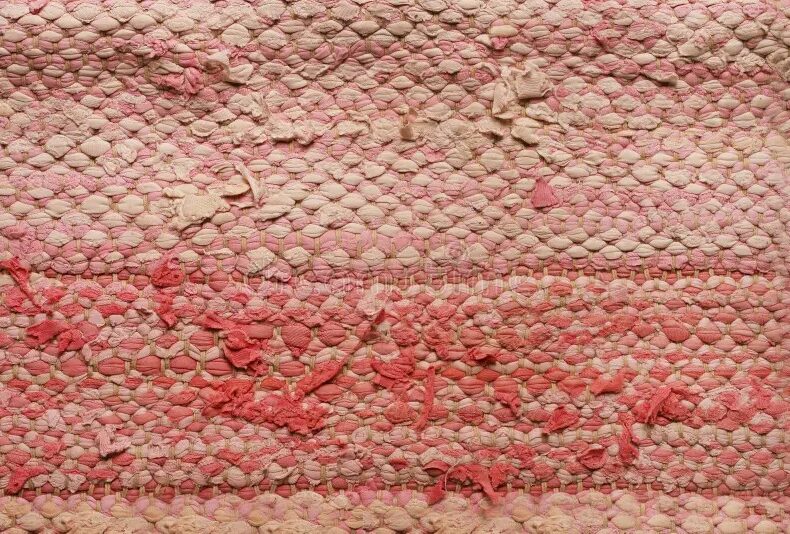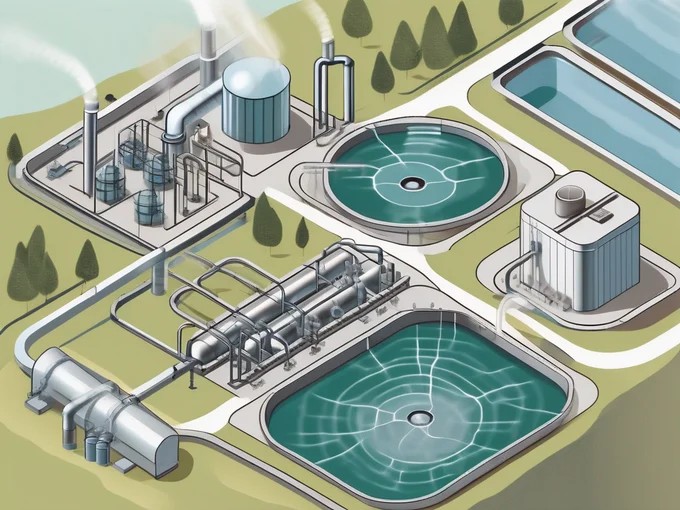
From Landfill to Luxury: How Chemical Recycling is Weaving the Future of Sustainable Fashion
The fashion industry, long defined by fleeting trends and rapid production cycles, is standing at a critical crossroads. Every year, millions of tons of clothing are discarded, creating a mountain of textile waste that strains our planet’s resources. At the heart of this issue lies a complex technical challenge: the blended fabrics that make up a vast portion of our wardrobes. These materials, particularly polycotton, have historically been a recycling dead-end. However, a wave of technological innovation is now breaking down these barriers, promising to unravel our textile waste problem and weave a new, circular future for fashion. This shift isn’t just a topic for industry insiders; it represents a fundamental change in our relationship with what we wear, touching on everything from Personal Finance to Mental Health.
This revolution in textile recycling is a cornerstone of the growing Sustainable Living movement, offering a tangible solution to the environmental cost of fast fashion. By transforming old garments back into pristine raw materials, these new processes are making a closed-loop system—where clothes are endlessly recycled without a loss in quality—a tangible reality. This article delves into the science behind this breakthrough, exploring how it works, its profound implications for the industry and consumers, and how we can all participate in this exciting transformation. It’s a development that belongs not just in Fashion News, but in headlines covering technology, environment, and Lifestyle News worldwide.
The Looming Crisis of Textile Waste
For decades, the fashion industry has operated on a linear “take-make-dispose” model. We extract resources, manufacture garments, and after a relatively short period of use, discard them. The result is an environmental crisis of staggering proportions, with an estimated 92 million tons of textiles waste created annually. A significant portion of this waste consists of blended fabrics, which have become the industry’s recycling paradox.
The Problem with Blends
Polycotton, a blend of polyester (a synthetic polymer) and cotton (a natural cellulose fiber), is a ubiquitous material prized for its unique combination of qualities. It offers the strength, durability, and wrinkle-resistance of polyester with the softness and breathability of cotton. This makes it ideal for everything from t-shirts and bedsheets to workwear. However, these intertwined fibers are notoriously difficult to separate for recycling.
Traditional mechanical recycling methods, which shred textiles into smaller pieces to be re-spun into yarn, are ill-suited for blends. The process drastically shortens the fibers, particularly the cotton, resulting in a lower-quality, weaker material. This “downcycling” means an old t-shirt might become insulation or stuffing, but it can rarely be turned back into a new t-shirt of comparable quality. This limitation has been a major roadblock to achieving a truly circular economy in fashion, contributing to a culture of disposability that clashes with the principles of Zero Waste and Eco-Friendly Living.
The Environmental and Economic Fallout
The inability to effectively recycle blended textiles has severe consequences. Landfills are overflowing with discarded clothing that can take hundreds of years to decompose, releasing methane and other greenhouse gases in the process. The polyester component sheds microplastics into our soil and waterways, a growing concern for both environmental and human health, a topic frequently covered in Health & Wellness reports. Furthermore, the constant demand for virgin materials perpetuates an unsustainable cycle. Conventional cotton farming is water-intensive and often reliant on pesticides, while polyester production is derived from fossil fuels. This linear model is not just an environmental issue; it’s an economic one. It represents a massive loss of valuable materials that could be recaptured, a poor strategy from a Financial Planning perspective for both corporations and society.
Innovations in Chemical Recycling: The New Frontier

The key to unlocking the potential of blended fabrics lies in a sophisticated process known as chemical recycling. Unlike mechanical methods that tear fibers apart, chemical recycling uses chemistry to deconstruct fabrics at a molecular level, separating the different polymer types and restoring them to their original, pure building blocks. This technological leap is poised to redefine the concept of waste in the fashion world.
How Advanced Chemical Separation Works
One of the most promising methods for separating polycotton blends involves a process that can be broadly described as selective hydrolysis. Here’s a simplified breakdown of how this groundbreaking technology functions:
- Pre-treatment: Post-consumer garments are collected, sorted, and shredded into smaller feedstock. Buttons, zippers, and other non-textile components are removed.
- Polymer Separation: The shredded material is subjected to a specific combination of water, heat, and green chemicals. This process is precisely calibrated to target and break down the polyester (a PET polymer) into its core monomers—terephthalic acid (PTA) and monoethylene glycol (MEG). Crucially, this reaction leaves the cotton’s cellulosic fibers intact and unharmed.
- Purification and Re-creation: The resulting mixture is separated. The polyester monomers are purified and then re-polymerized to create new, virgin-quality polyester resin, ready to be spun into yarn. The preserved cotton pulp is cleaned and processed, emerging as a high-quality cellulosic material that can be used to create fibers like viscose or lyocell.
This process is a game-changer. It’s a perfect example of how advancements in material science can provide solutions for Green Living, turning what was once considered garbage into a valuable resource.
The Purity and Quality Advantage
The single most important benefit of this chemical recycling method is its ability to overcome the quality degradation inherent in mechanical recycling. The polyester and cellulosic fibers produced are indistinguishable from their virgin counterparts. This means that true fiber-to-fiber recycling is now possible on a large scale. A worn-out polycotton shirt can be deconstructed and reborn as a high-performance athletic top and a soft, luxurious dress, completing a closed loop. This breakthrough is critical for building a truly Sustainable Fashion industry where materials are kept in circulation at their highest value for as long as possible, a core principle of the circular economy.
The Ripple Effect: Reshaping Industries and Lifestyles
The ability to recycle blended textiles is not just a scientific achievement; it’s a catalyst for systemic change that will have a ripple effect across industries, influencing consumer behavior and even our approach to Personal Development. It signals a move away from a disposable mindset toward one of stewardship and value preservation.
For the Fashion Industry: A Paradigm Shift
For fashion brands, this technology opens up a world of possibilities. Major apparel companies are already forming strategic partnerships with chemical recycling innovators to secure a supply of these next-generation sustainable materials. This will lead to:
- New Business Models: Brands can more credibly implement take-back programs, assuring customers that their old clothes will be transformed into new ones, not shipped to a landfill. This could even pave the way for clothing rental or subscription services to become more mainstream.
- Supply Chain Resilience: By creating a reliable source of high-quality recycled materials, the industry can reduce its dependence on volatile commodity markets for virgin cotton and petroleum. This is a smart move from an Investment News perspective, as companies with sustainable supply chains are often seen as less risky.
- Evolving Skillsets: This shift will create new jobs and demand new skills. Professionals with expertise in material science, sustainability, and circular economy principles will be highly sought after, offering new Career Advice for those looking to enter or advance in the industry.
For the Consumer: The Power of Conscious Choice

As these recycled textiles become more common, consumers will have more power than ever to make choices that align with their values. This change empowers individuals to move beyond passive consumption and become active participants in the circular economy. This mindful approach to shopping can enhance Mental Health and reduce the anxiety often associated with consumerism. It connects our daily choices, like getting dressed, to a larger sense of purpose and positive Social Impact. This also extends into our homes; the principles of choosing sustainable, long-lasting items in our wardrobe can influence our approach to Home Organization and Decluttering, fostering a philosophy of Minimalism.
Beyond Fashion: Cross-Industry Applications
The impact of this technology extends far beyond the closet. The recycled polyester can be used in a wide range of products, including carpets, upholstery, and automotive interiors, influencing fields like Interior Design and manufacturing. The high-purity cellulosic pulp derived from the cotton portion can be used to create packaging, hygiene products, and other bio-based materials. This cross-industry potential underscores the immense value locked within our textile waste, transforming it from a fashion problem into a universal resource solution.
Putting Principles into Practice: Your Role in the Circular Economy
Technology alone cannot solve the waste crisis. A successful circular fashion ecosystem requires active participation from consumers. Embracing this new paradigm involves a shift in mindset and habits, but the steps are practical and achievable.
Best Practices for Consumers

Here are some actionable insights and Fitness Tips for your wardrobe to build a more sustainable lifestyle:
- Invest in Quality: Follow the classic Budget Tip of buying the best you can afford. Well-made garments last longer, reducing the need for frequent replacement and ultimately saving you money.
- Extend Garment Life: Practice proper garment care. Washing clothes in cold water and line-drying not only saves energy but also reduces wear and tear. Learning basic mending skills is a valuable DIY Project that can significantly extend the life of your favorite pieces.
- Support Circular Brands: Research brands that are transparent about their supply chains and actively investing in recycled materials and take-back programs.
- Avoid the Trash Can: Never throw textiles in the garbage. Donate wearable items and seek out textile recycling drop-offs for garments that are at the end of their life.
Common Pitfalls to Avoid
As sustainability becomes a marketing buzzword, it’s important to be a discerning consumer. Watch out for “greenwashing,” where companies make vague or misleading claims about their environmental credentials. Look for specific data and third-party certifications. Understand the difference between a product being “recyclable” (meaning it could be recycled if the infrastructure exists) and being made from “recycled” content (meaning it already contains reclaimed materials). This critical thinking is a form of Self-Improvement that leads to more impactful choices.
Conclusion: Weaving a Better Tomorrow
The advent of advanced chemical recycling for blended textiles marks a pivotal moment in the journey toward a circular economy. It is a powerful technological solution that directly addresses one of the most persistent challenges in Sustainable Fashion. By breaking down complex materials into their pure, reusable components, this innovation paves the way for a future where the concept of clothing waste becomes obsolete. The fabrics of tomorrow will not be disposable but part of an infinite loop of regeneration and creativity.
However, this technological breakthrough is only half of the story. Its ultimate success depends on a collective shift in behavior from brands, policymakers, and, most importantly, consumers. By embracing conscious consumption, caring for our clothes, and demanding greater transparency, we can all contribute to weaving this promising future into a reality. The path forward is one where style and sustainability are seamlessly intertwined, creating a healthier planet and a more mindful way of living for generations to come.
Archives
- December 2025
- November 2025
- October 2025
- September 2025
- August 2025
- October 2023
- September 2023
- August 2023
- July 2023
- June 2023
- May 2023
- April 2023
- March 2023
- February 2023
- January 2023
- December 2022
- November 2022
- October 2022
- September 2022
- August 2022
- June 2022
- May 2022
- April 2022
- March 2022
- January 2022
- December 2021
- November 2021
- October 2021
- August 2021
- November 2020
- July 2020
- May 2020
- April 2020
- March 2020
- August 2018
- July 2018
- June 2018
- April 2018
- March 2018
Categories
- Age Groups
- AI/ML
- Alternative Medicine
- Animal Health
- Animal Husbandry
- Animals
- Anti-Aging
- Architectural Design
- Auditory Science
- Augmented Reality
- Automation
- Babies
- Baby
- Beauty & Skincare
- Biohacking
- Biomechanics
- Book Reviews
- Breastfeeding
- Budgeting
- Business
- Cardiovascular Health
- Career Advice
- Career Development
- Career Growth
- Cats
- Chess
- Chronobeauty
- Circular Economy
- Cleaning Tips
- Cloud Computing
- Cognitive Health
- Cognitive Performance
- Cognitive Science
- Community
- Community Building
- Community Engagement
- Community Living
- Computer Vision
- Consumer Guides
- Consumer Trends
- Container Gardening
- Content Analysis
- Content Non-Technical
- Content Strategy
- Cosmetic Chemistry
- Cultural Events
- Cycling
- Data Analysis
- Data Engineering
- Data Science
- Design Psychology
- Developer Productivity
- Diet
- Diet
- Digital Identity
- Digital Media
- Digital Wellbeing
- DIY Projects
- Dogs
- Engineering Culture
- Entertainment News
- Environmental Impact
- Environmental Science
- Equity Compensation
- Exercise
- Exercise Science
- Exercise Technique
- Exotic Pets
- Fall Gardening
- Family
- Family Health
- Family Life
- Fashion Business
- Fashion Industry
- Fashion News
- Fashion Tech
- Financial Analysis
- Financial Planning
- Flooring Maintenance
- Food
- Food Psychology
- Food Safety
- Food Tech
- Functional Fitness
- Functional Training
- Future Of Work
- Garden Care
- Garden Maintenance
- Gardening Tips
- Greece
- Greek
- Greek Food
- Gymnastics
- Hardware Engineering
- Health
- Health And Wellness
- Health Informatics
- Health Science
- Health Tech
- Healthcare Management
- Healthy Eating
- Healthy Recipes
- Holistic Health
- Holistic Wellness
- Home & Living
- Home Decor
- Home Financing
- Home Health
- Home Improvement
- Home Organization
- Horticulture
- Identity Management
- Industrial Design
- Industry Analysis
- Infant Nutrition
- Infrastructure Management
- Ingredient Deep Dive
- Integrative Medicine
- Interior Design
- Internet of Things
- Internet of Things (IoT)
- Invalid Request
- Investment Strategies
- Investment Strategy
- IoT
- Kids
- Leadership Development
- Learning Strategies
- Lifestyle
- Lifestyle Brands
- Lifestyle News
- Lifestyle Optimization
- Literary Criticism
- Literature
- Logistics Management
- Material Science
- Materials Science
- Meal Planning
- Media Analysis
- Meditation
- Mental Health
- Mental Performance
- Mental Wellness
- Miami
- Miami Food
- Mind And Body
- Minimalism
- Mobile Development
- Neuroscience
- No Applicable Categories
- Nutrition
- Nutrition News
- Operating Systems
- Operational Resilience
- Opinion
- Organization Tips
- Outdoor Living
- Over 40
- Over 50
- Over 60
- Parenting
- Parenting
- Parenting Strategies
- Performance
- Personal Development
- Personal Finance
- Personal Growth
- Personal Productivity
- Pet Care
- Pet Safety
- Philosophy
- Politics
- Productivity
- Protein
- Psychology
- Psychology of Space
- Reading Culture
- Real Estate Investment
- Recipes
- Regulatory Compliance
- Remote Work
- Renovation Planning
- Resource Management
- Responsible Pet Ownership
- Retail Strategy
- Robotics
- Science
- Seafood
- Seasonal Gardening
- Security
- Self-Care
- Skincare Science
- Skincare Trends
- Sleep
- Sleep Health
- Smoothies
- Social Impact
- Soft Skills
- Soil Health
- Spatial Computing
- Spatial Design
- Stress Management
- Supplements
- Sustainability
- Sustainability Science
- Sustainable Engineering
- Sustainable Fashion
- Systems Engineering
- Tax Optimization
- Tax Strategy
- Travel
- Travel News
- Travel Safety
- Travel Tips
- Trend Analysis
- Uncategorized
- Urban Planning
- Veggie
- Virtual Events
- Volunteering
- Wealth Management
- Wearable Technology
- Wellness
- Wellness Technology
- Work-Life Balance
- Workplace Culture
- World
- Writing
- Writing Skills
- Yoga News
- Zero Waste




Leave a Reply